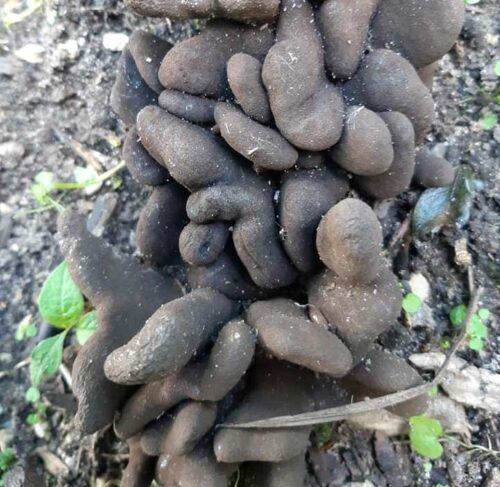The Dead man’s fingers belongs to the sac fungi. The fungus has many upright, finger-like branches.
Dead man’s fingers (Xylaria polymorpha) a fungus belonging to the sac fungi (Ascomycota). The fungus has many upright, finger-like branches. These “fingers” grow three to eight cm long and are three cm in diameter. The fungus Dead man’s fingers is colored dark brown to black and resembles burnt wood; hence its name.
The fungus Dead man’s fingers is annual and is fairly common and widespread in British and European deciduous forests, usually on decaying wood at the base of beech and oak trees.
Dead man’s fingers resembles Dead moll’s fingers (Xylaria longipes), but it grows mainly on the dead wood of maple trees.
Xylaria – sac fungi – which include Dead man’s fingers, contain the toxic amatoxin and phallotoxin; the fungus Dead man’s fingers is poisonous.
Where to find
- Deciduous forests
- Oak
- Beech
Control
The fungus Dead man’s fingers lives on dead wood and does not harm living plants in the area. Control unnecessary.
Prevention
Does not apply.

